To say the least, it’s been an interesting return to football for Atlanta United. Locker room drama, roster trouble, and a general lack of cohesion all were potential reasons for their horrid display in the MLS is Back Tournament this past month.
Fortunately for Atlanta, they now can move on and look past this poor month. Atlanta fans were also pleased to see former coach and Ajax legend Frank de Boer sacked in the aftermath of finishing last in their group. However in order to fully move on it’s important to address the issues at hand and figure out how to improve on the multiple problems the team went through. In this tactical analysis in the form of a scout report, we will take a look at what went so wrong for Atlanta United and what they can do in the coming weeks to get their season back on track.
Attacking Efficiency
It first must be said that trying to replace one of the best players in the league was never going to be easy for Atlanta United. When former Serie A stud Josef Martínez went down with a torn ACL, Atlanta simply never reacted quick enough. Martínez, a hallmark of Atlanta’s once-dominant attack, scored a combined 82 goals in 89 appearances. He isn’t replaceable, but the acquisitions of Érick Torres and Jürgen Damm would’ve been helpful had they come before the MLS is Back Tournament.
Now to the more specific problems with the team’s performance in Orlando; In three games, the Five Stripes failed to score a single goal. Even with injuries, a squad of attacking talent headlined by the likes of Gonzalo Martínez and Ezequiel Barco is too strong for the lack of output in goals. It begs the question: what happened?
Frank de Boer opted for his usual 3-4-3 shape for all three of Atlanta’s matches. On paper, the side looked fairly well-balanced.
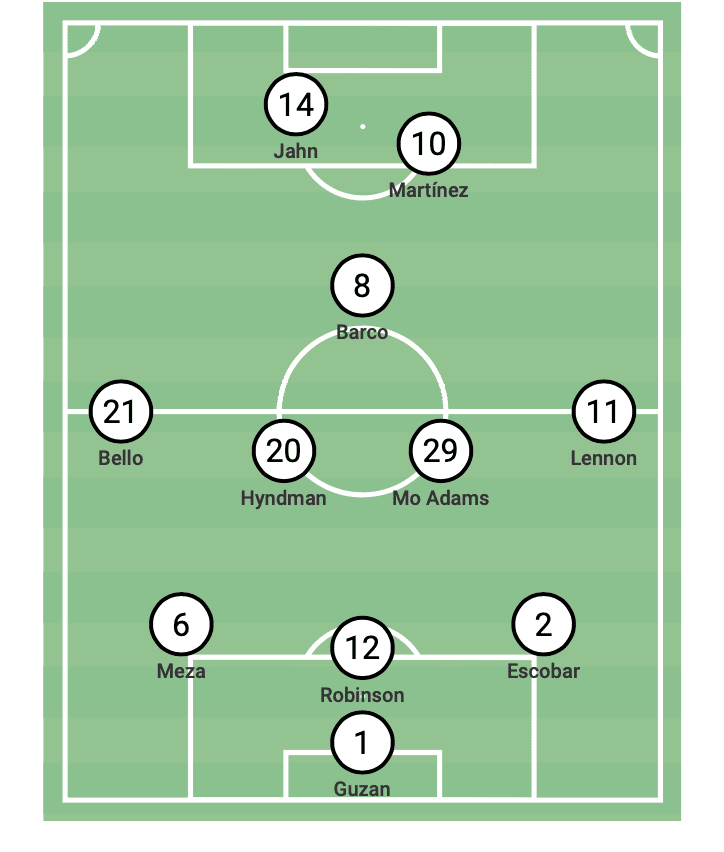
The three centre-backs would sit in and mitigate any opposition counter, the wing-backs could get up the pitch to provide width and come back to form a back five, and the three attackers would have free license to move where they felt most dangerous.
Unfortunately, this simply was not the case. While the wing-backs did take up dangerous positions on multiple occasions, the attack failed to pose any threat to any of the three defences they faced. As seen in their average positions, it seemed as if the three attackers at the top were next to each other for much of the game.
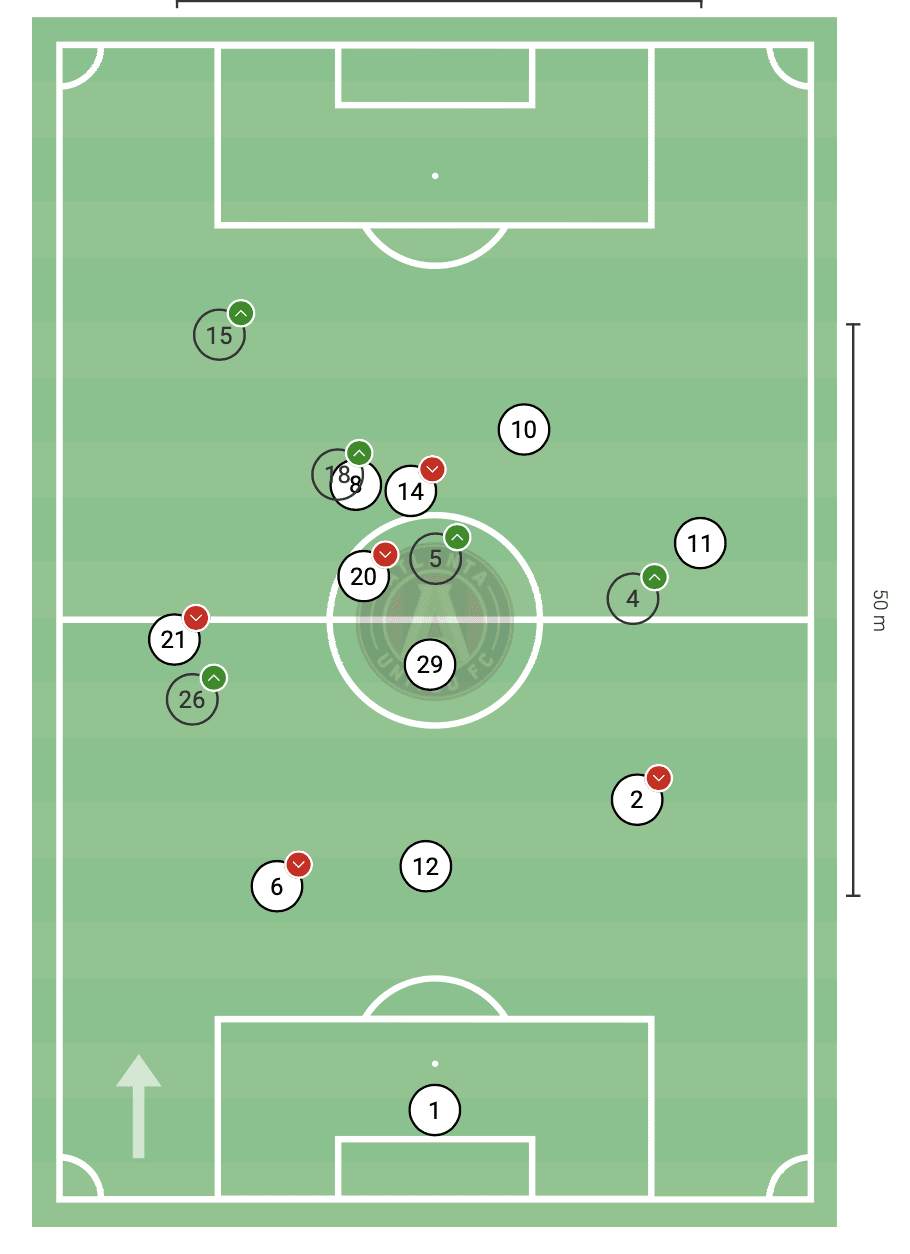
While the wing-backs found success in early portions of their matches, defences slowly adapted to Atlanta’s game-plan quickly. De Boer’s approach was clearly too obvious from the start.
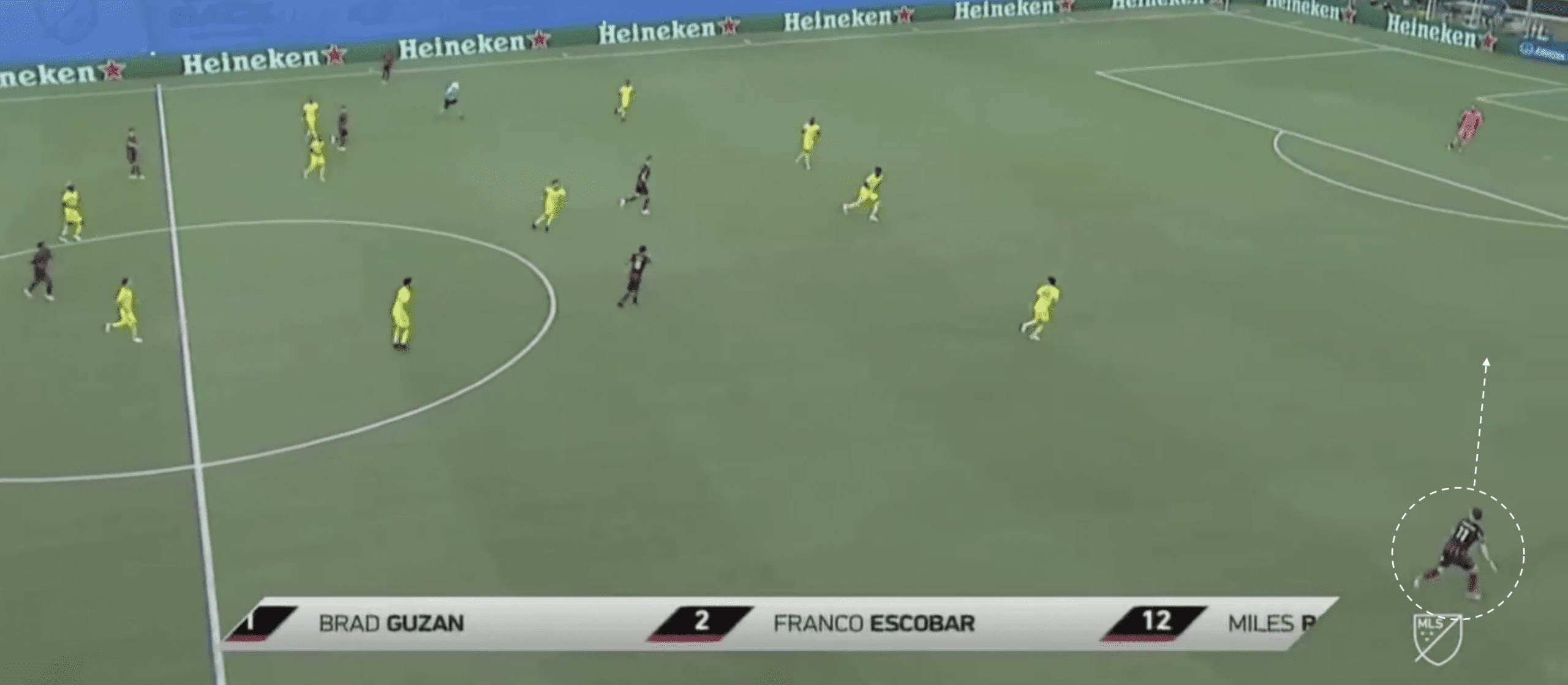
Brooks Lennon found himself in acres of space in the early goings against Columbus, but after a few more balls down the right-side, Columbus instructed their left-back to keep a closer eye on Lennon. Utilizing wing-backs is a perfectly viable option for teams, but De Boer’s lack of creativity to free up other players is why their approach failed so quickly.
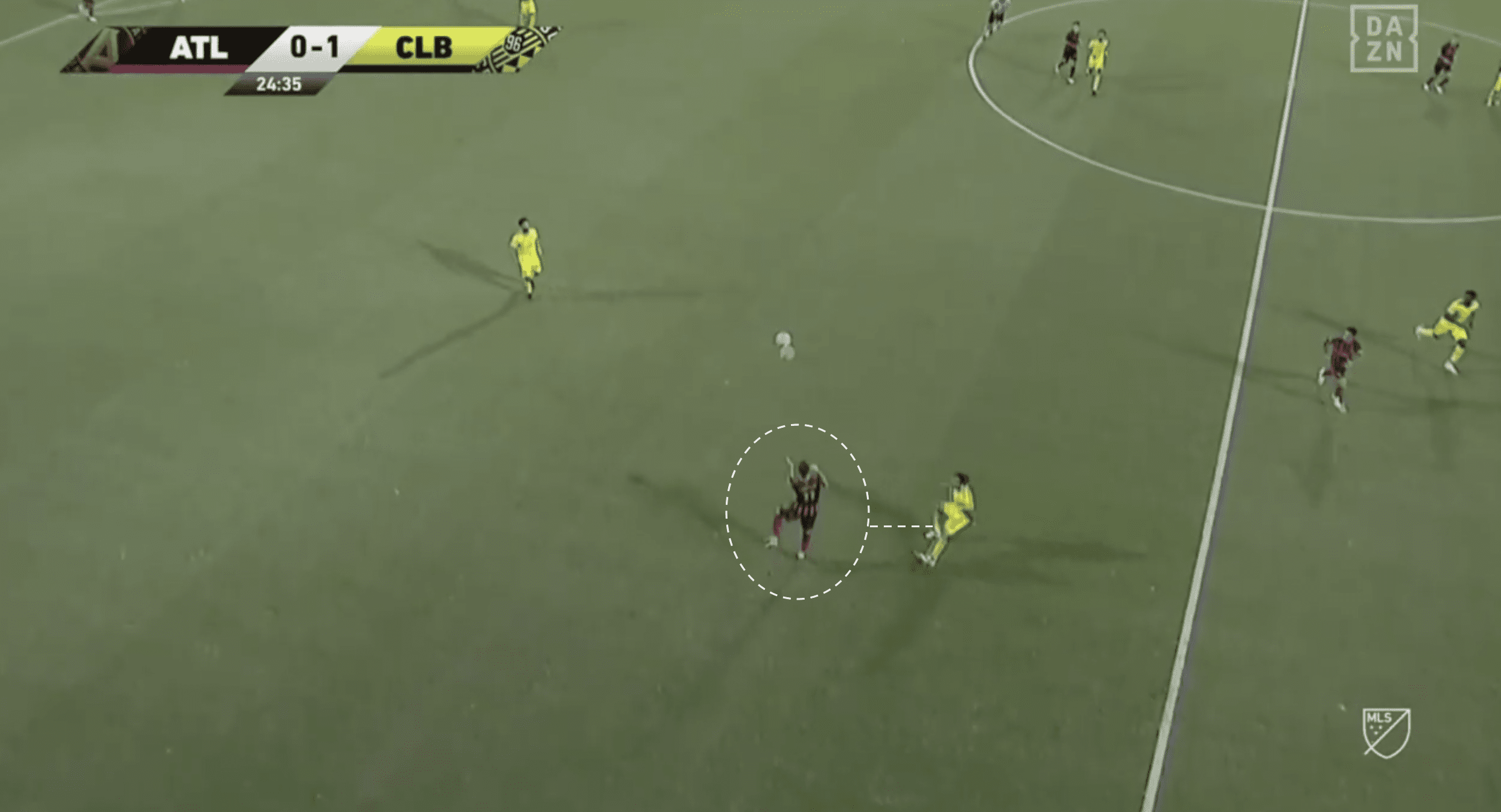
Atlanta never had a backup plan. While they were able to put together a solid amount of attacks per minute, they averaged over 60% possession in their first two games and were mostly wasting that possession on sideways or backward passes.

Despite having playmakers in the squad, De Boer’s approach in his attacking setup guaranteed that the creativity of Barco and Martínez would be a non-factor. Atlanta was so fixated on attacking through their wing-backs that the middle of the pitch would become crowded and the positions taken up by the attacking unit were often flat. There was no dynamism, as we can in this moment below.
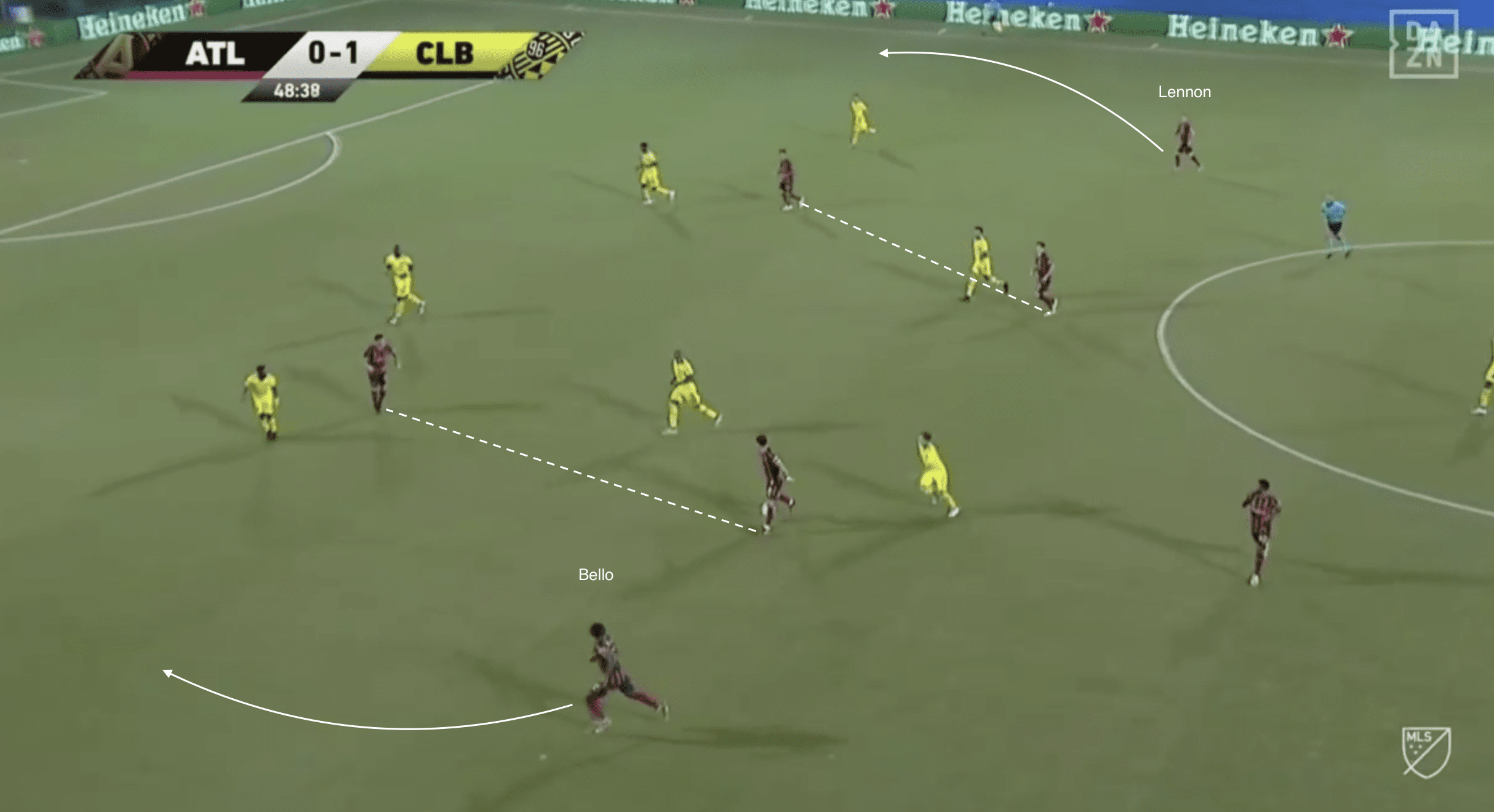
This was a typical shape that Atlanta took up, where the two strikers were directly in front of the two attacking-midfielders. Being this vertical is a great way to not unlock defences. Columbus were easily able to plug gaps in the few passing lanes Atlanta were looking for.
Atlanta found the most success in the final-third when playing more direct, something that De Boer is clearly opposed to. While the midfield three offer no support to Atlanta’s left-back, Gonzalo Martínez finds space behind the opposition’s backline and is through on goal, a rarity.
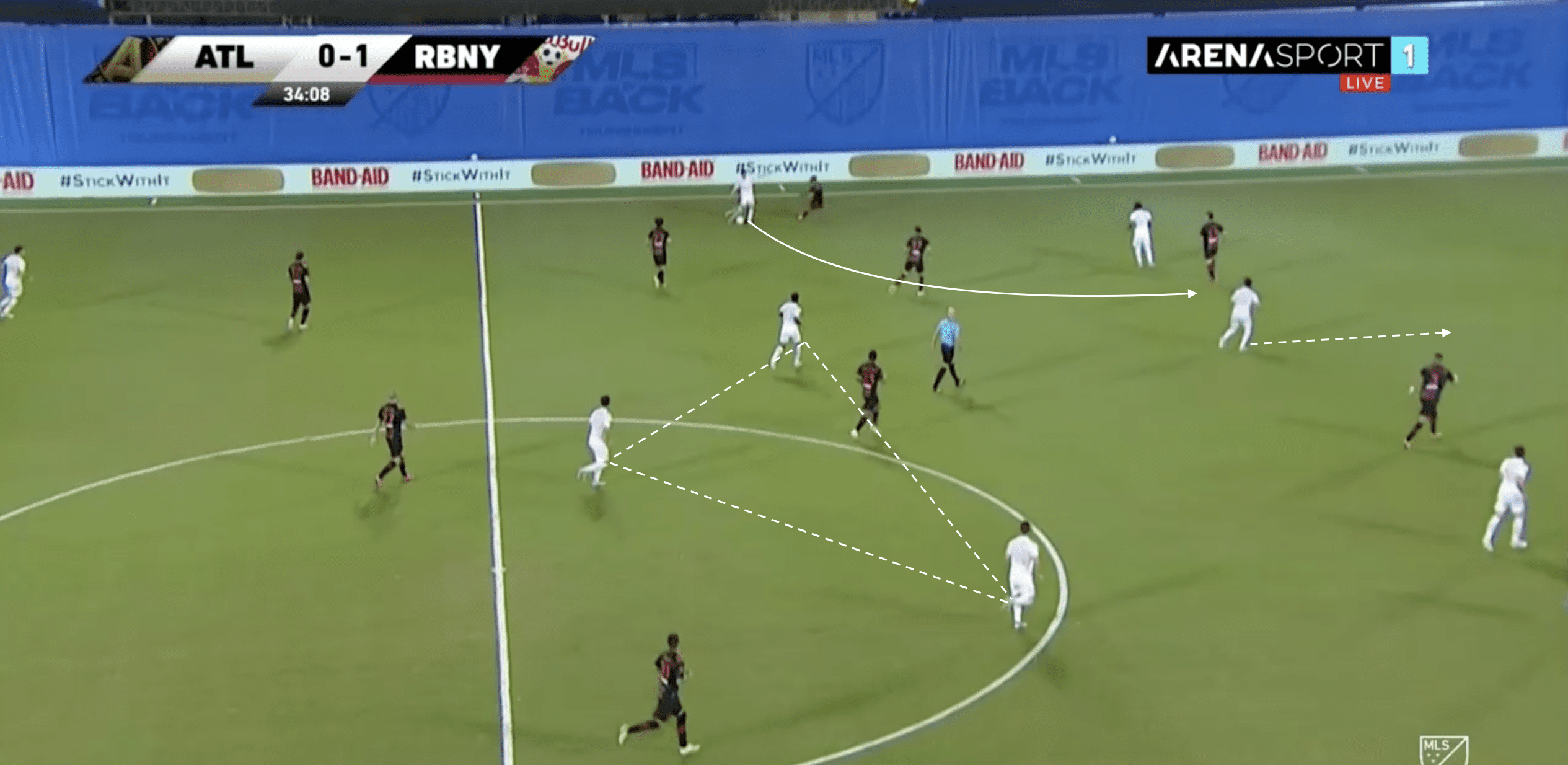
If De Boer was a more flexible coach, he’d maybe recognize the avenues of opportunity that come with using his side’s pace, but he stuck with his possession-based approach instead.
A midfield mess
The decline of Atlanta’s midfield has been one in the making for a while now. Ever since the departure of Darlington Nagbe, it seems that Atlanta don’t have any presence in the middle of the pitch. While De Boer’s system is partly to blame, his personnel has also been all wrong.
In the MLS is Back Tournament, Atlanta United predominantly opted for only two men in the midfield. The American duo of Mo Adams and Emerson Hyndman was the most used pairing but were clearly not working well together. The former did well to defend in an outnumbered midfield, but Hyndman found himself out of position on numerous occasions as he tried to help out in attack. Atlanta’s lack of a 10 is to blame for this.
The biggest problems with the Atlanta midfield came out when the team tried to advance the ball up the pitch. Naturally, a two-man midfield is much easier to defend against. Thus, New York man-marked in the midfield and took away the entire middle of the pitch for Atlanta.
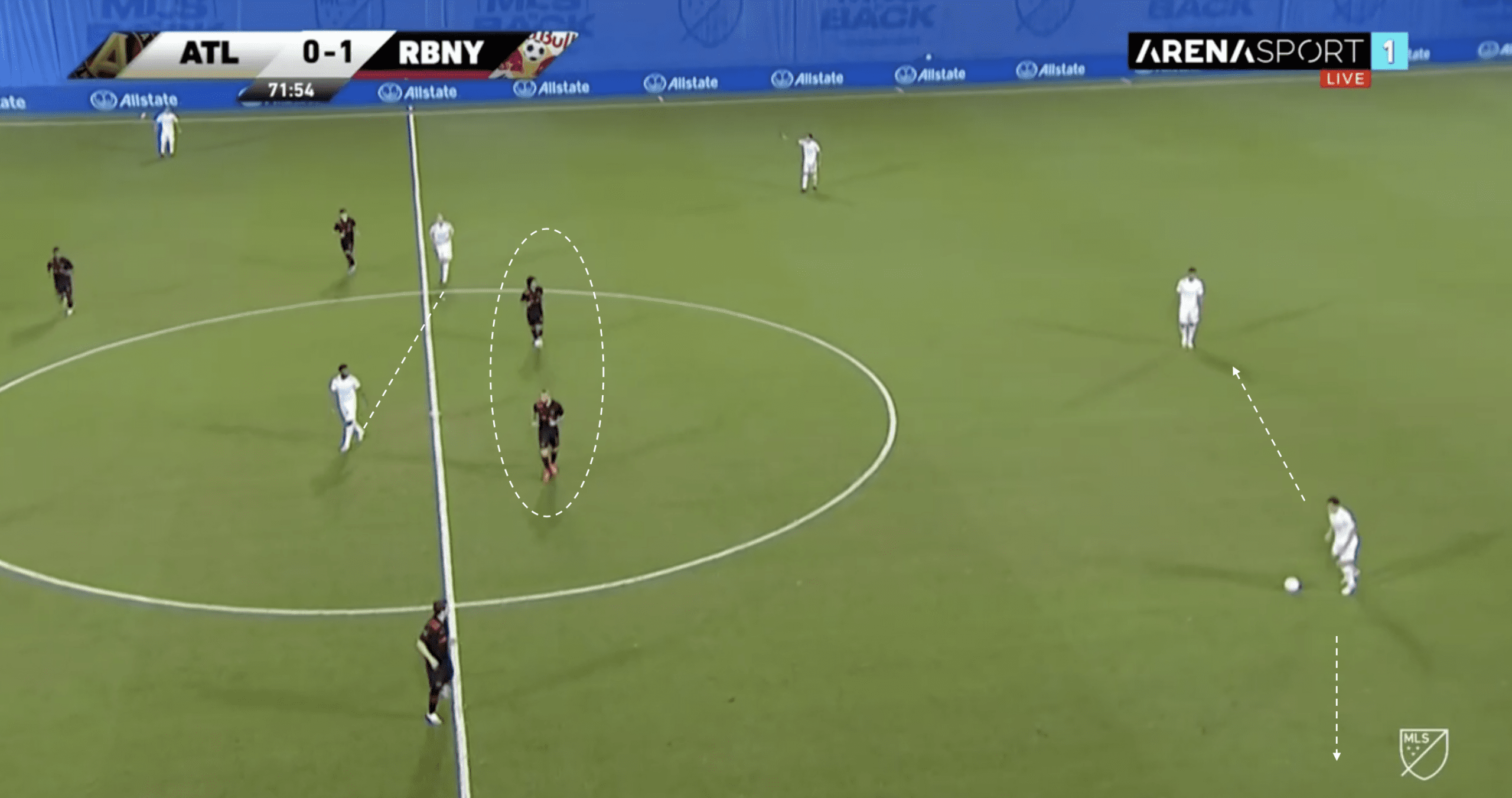
This is when Atlanta was forced to play balls into their wing-backs who were constantly under pressure or even worse, were forced to reset and allow New York the chance to move even further up the pitch. This happened often in the second half and is represented in the Red Bull’s low PPDA of 6.7. In other words, Atlanta struggled to get into New York’s half.
On the flip side, Atlanta’s press failed miserably. While not a surprise, Atlanta’s lack of cohesion as an entire unit cost them when trying to trap Columbus
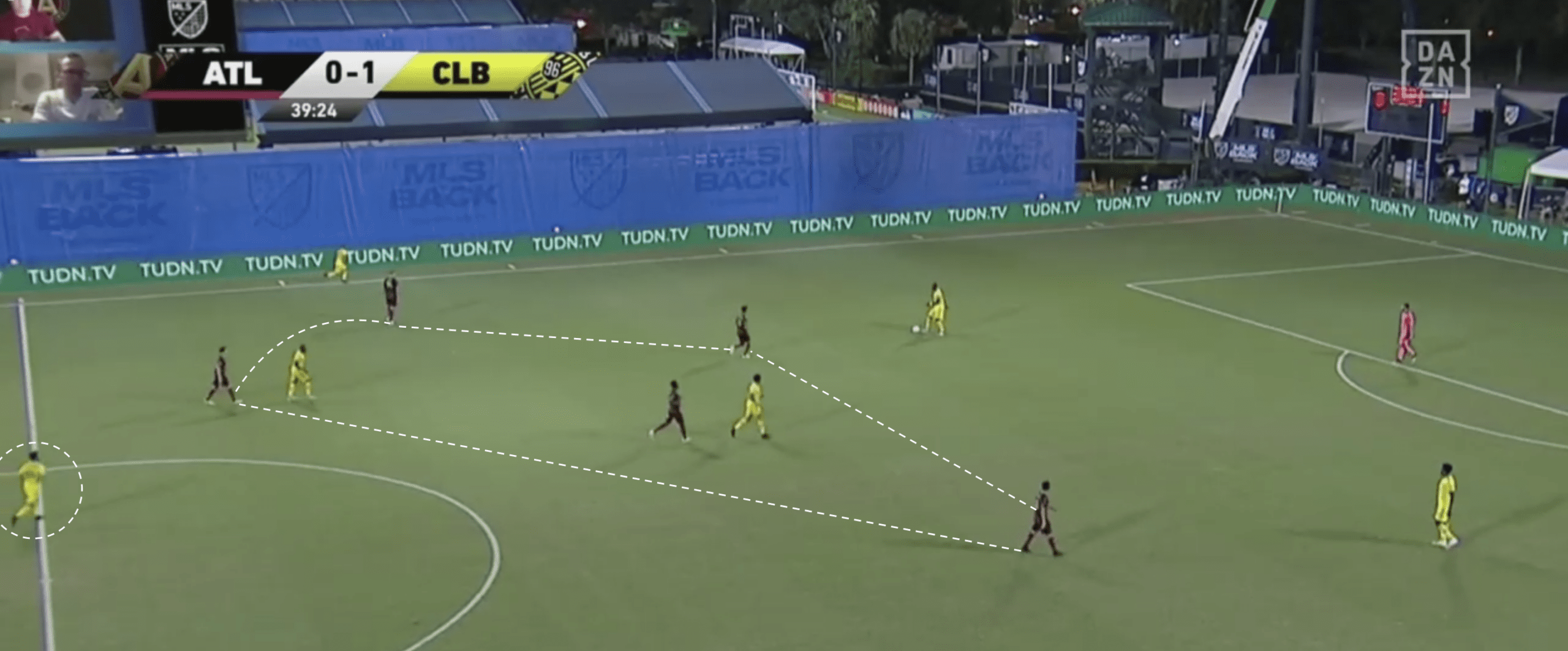
Atlanta got men up and looked to be in a good position to keep Columbus going backwards, but the two-man midfield continuously lacked the awareness to pick up the Columbus attacker who would check into the vacant space left by Adams and Hyndman.
One solution to the lack of production of any sort from Atlanta’s midfield is a man who fell out of favour with De Boer. Eric Remedi was a massive reason for Atlanta’s past success as a team, and his dropping seems illogical given what he can offer. Not only is he able to do there dirty work on the defensive side, but he is also much more press resistant than Mo Adams. After coming on in the second half against Columbus, the Argentine was a calming influence for his side.
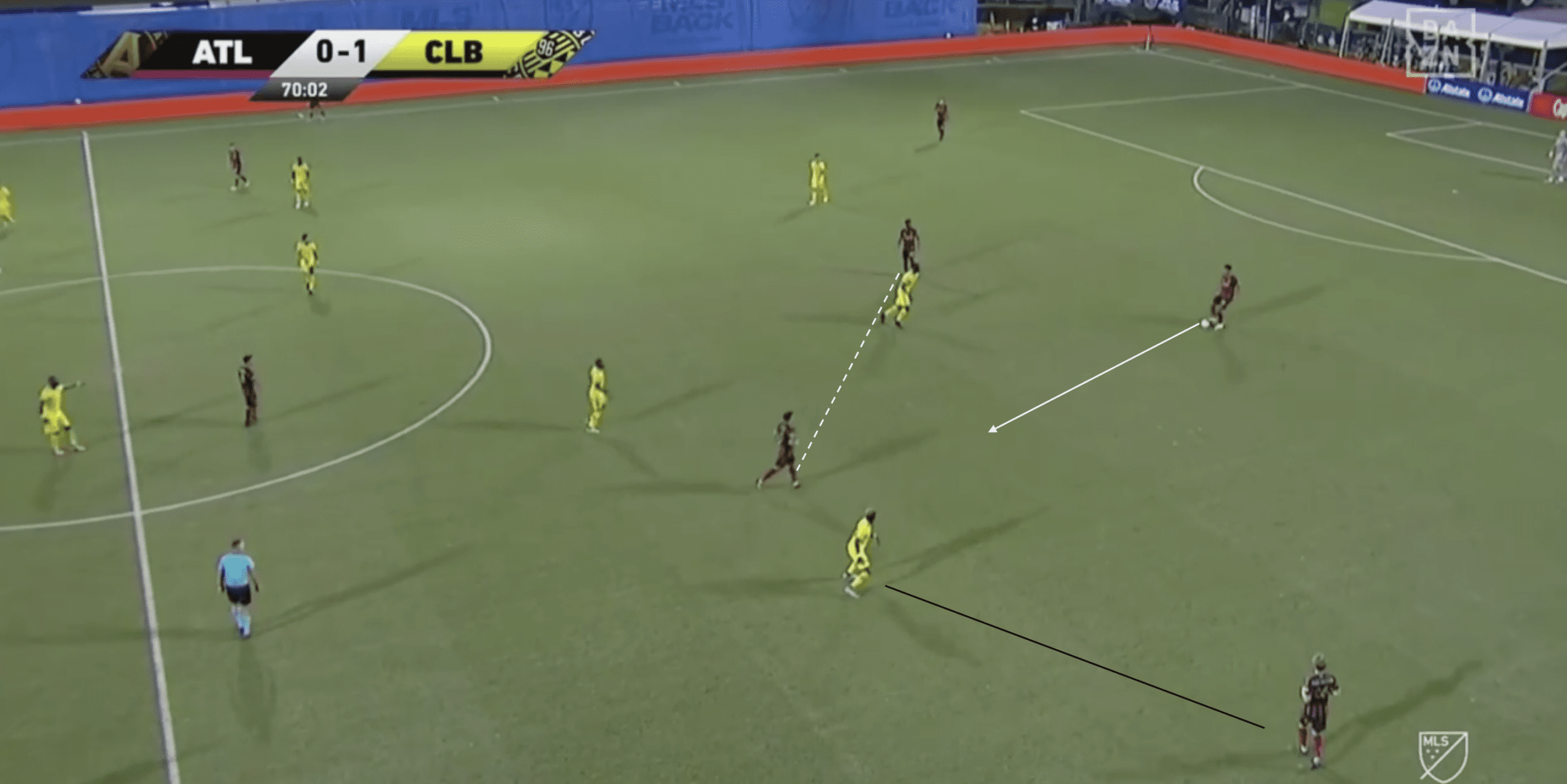
In a double pivot alongside Adams, Remedi actually tried to find space and be an option for his backline, something they were greatly missing. Rather than hide behind the opposition’s front block like Hyndman and Adams, as seen above, Remedi found half-spaces to advance the ball.
If Atlanta wants to return to their old-selves, having an anchor in the midfield who is also comfortable on the ball is a must. Remedi needs to be starting for this team.
Defensive concerns
In reality, Atlanta United’s defence wasn’t actually too bad. Looking at the numbers, three goals conceded in three games is not horrible. While a team like Atlanta who had the second strongest defence in the MLS last year should expect better, their results in Orlando could’ve been much worse.
However, there are obvious problems with the back-line, many of which can be solved with a move away from De Boer’s 3-4-3. The three-man defence looked vulnerable on almost every opposition attack because they lacked any real support from the two wing-backs and defensive-midfielders.
Not even five minutes into their match against New York, the back-line was completely found out by one ball through the middle. The disconnection between centre-backs was evident on multiple occasions. In their match against Columbus, there was a massive gap between Miles Robinson and Franco Escobar. While this is useful in possession to spread the pitch, defending this wide is a death-wish for any side.
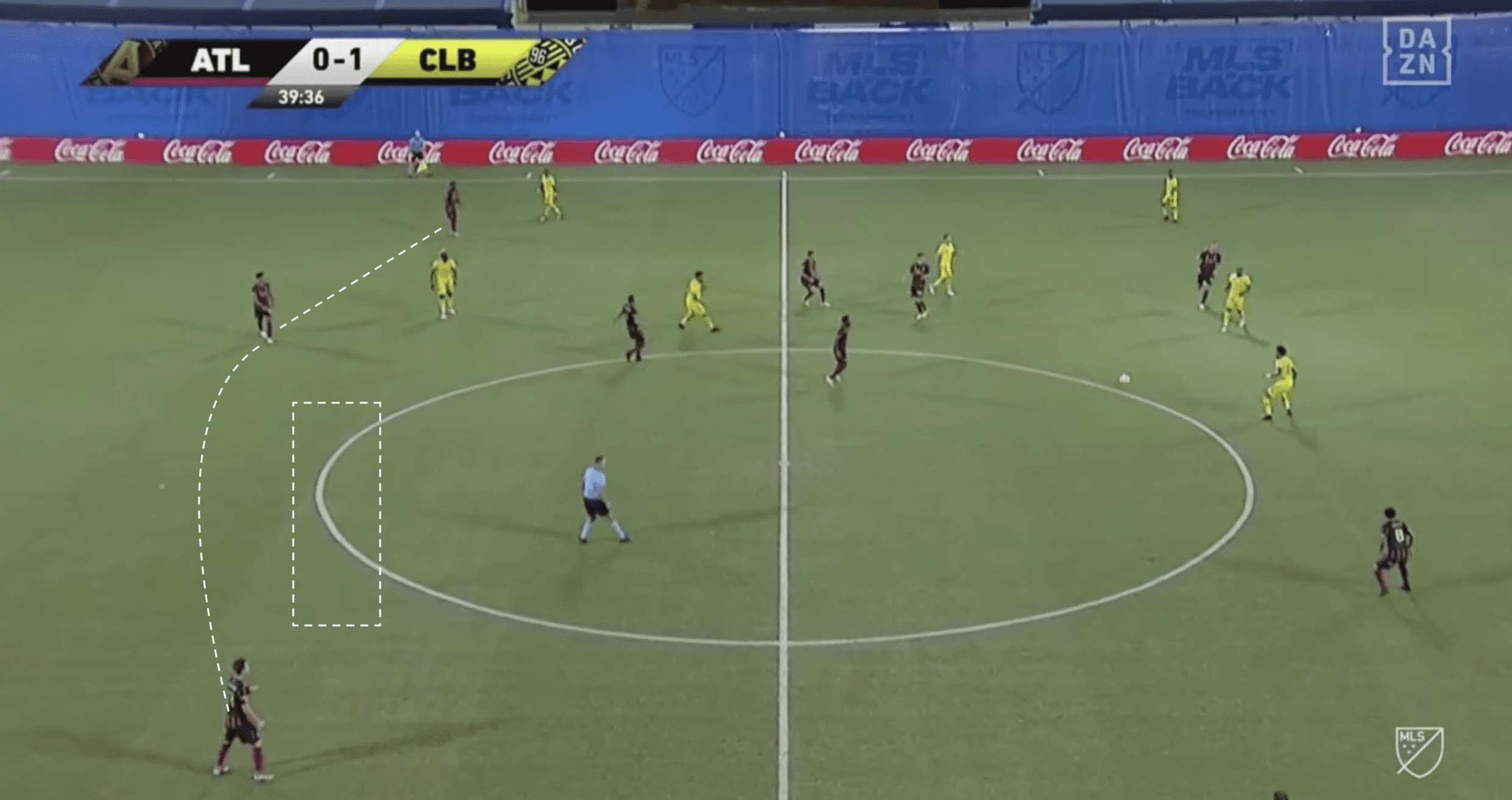
When Atlanta did get men back to form their five-man backline with the wing-backs tucked in, everything got very crowded and the team seemingly forgot about Columbus’s wide threat. Brooks Lennon pinches in to put pressure on the man with the ball while two blobs of Atlanta players just stand and watch.
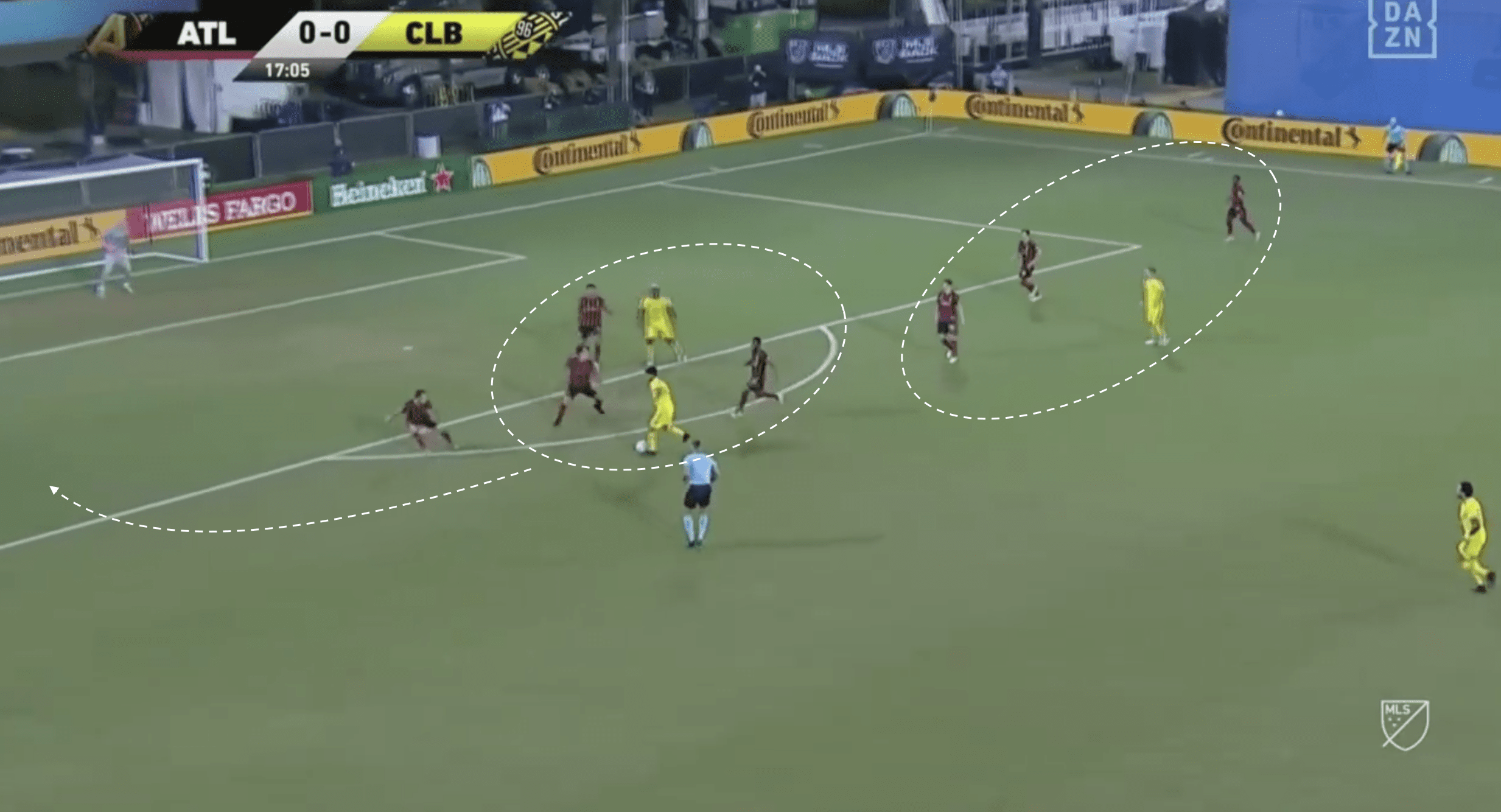
Like the midfield unit, there was no cohesion on display from the Atlanta back-line.
Atlanta needs to move away from their three-back obsession until they can fully figure out how to get their midfield and wing-backs supporting the defence.
Conclusion
Atlanta haven’t become a bad team overnight, it’s been coming for a long time. Their time in the Orlando bubble just further confirmed their current situation. Poor coaching is to blame for many of Atlanta’s shortcomings, but the players are too good to not take any accountability.
The front office realized this and with De Boer now out of the picture, Atlanta can go back to being the flexible side they once were under former coach Tata Martino.
Atlanta has one of the most talented squads in Major League Soccer, it’s now time to patch up their bruises and move forward as a club.






Comments